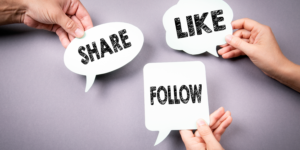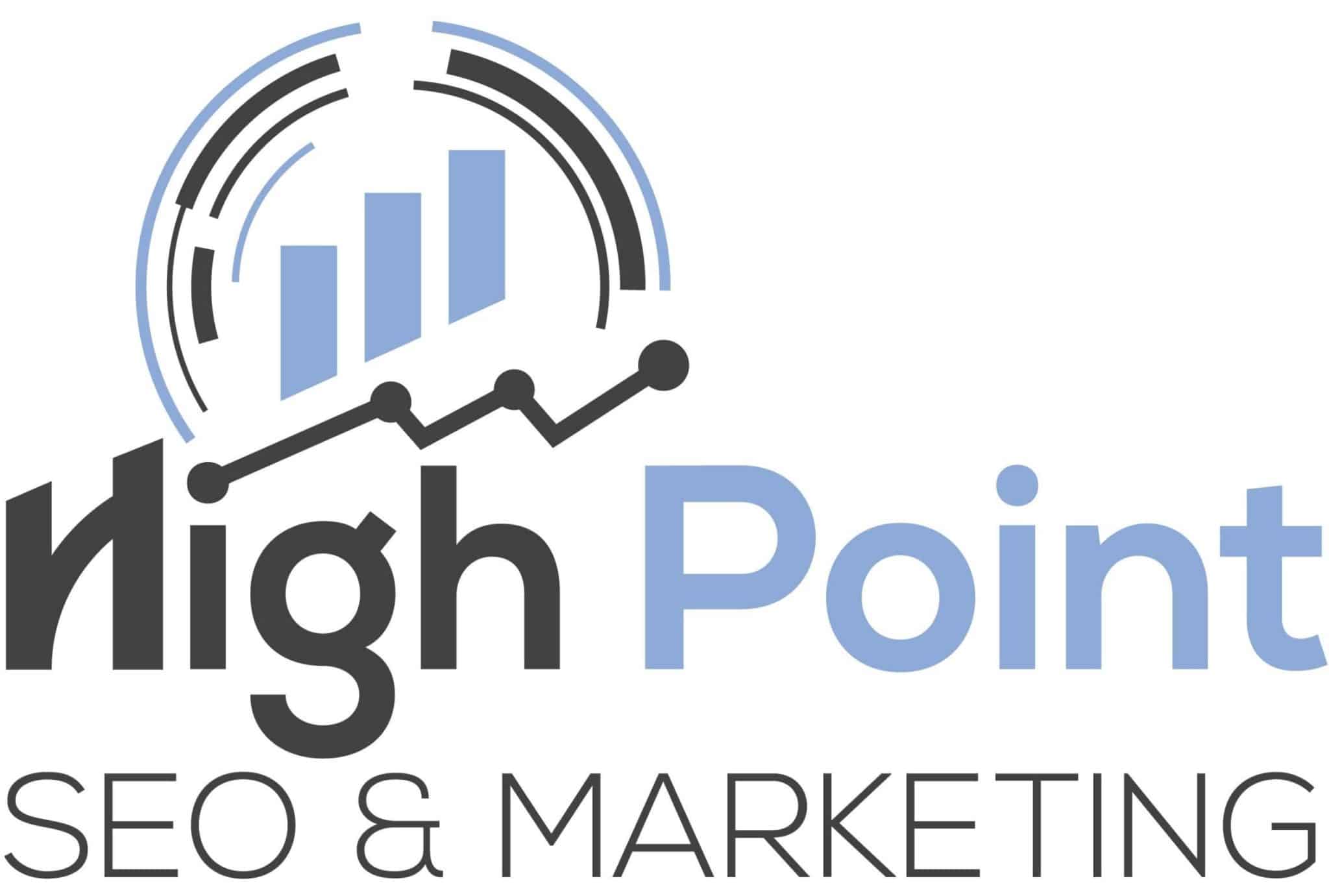The Best Social Media Sites for Advertising and Marketing

Welcome to the digital age, where social media has transformed product marketing. The millions of users on these platforms allow firms to target their audience with unparalleled precision and impact. Social networking may transform your marketing strategy, whether you’re a small local firm or a big giant.
We’ll examine the best social media platforms for advertising. We’ll discuss how Facebook, Twitter, Instagram, and YouTube may boost your brand’s visibility in the congested online marketplace.
The top social media sites for advertising are:
Several social media networks stand out for business promotion and marketing. These top social networking networks offer many features and tools to help businesses contact their target audience and achieve results.
Start with Facebook, the largest social network with over 2.8 billion monthly users. Businesses can develop targeted adverts for their ideal clients with its advanced targeting tools. Plus, Facebook’s powerful analytics let you track campaign results in real-time.
Instagram is owned by Facebook. Instagram is perfect for fashion, beauty, and food businesses to display their products and services with high-quality photos and videos. Increase visibility with trending hashtags and influencer collaborations.
Twitter’s quick pace and conversational nature make it another excellent advertising tool. Promote business-related tweets or trends with Twitter advertisements to reach potential consumers.
LinkedIn offers unique B2B marketing options because it targets professionals and enterprises. To reach niche decision-makers, target ads by job title, industry, or firm size.

Finally, YouTube is the second-largest search engine after Google! YouTube is ideal for developing captivating video ads that express your company’s story because of its large daily video viewership.
Effective advertising best practices vary for each social media site. Whether you use Instagram’s attractive photos or Twitter’s current topics, knowing each platform’s capabilities will help you adjust your content strategy.
You can learn what works in your sector by researching successful social media marketing initiatives on these channels, such as Nike’s #justdoit campaign.
Facebook is a major advertising and marketing platform. It gives businesses a huge audience with over 2.8 billion monthly active users. Target your audience by demographics, interests, actions, and more with Facebook’s sophisticated targeting capabilities.
Facebook advertising must grab attention fast with appealing images and language. Tell a story or promote numerous products in carousel or video advertising. Use Facebook Pixel to track conversions and improve advertising.
Custom audiences based on email lists or website visits are a unique feature of Facebook advertising. This enables tailored campaigns with great ROI.
Facebook also offers lead generation, messaging, and event response advertisements, giving businesses marketing options. Businesses may enhance brand awareness, website traffic, leads, and revenue by using Facebook’s large user base and advanced targeting.
Over 1 billion people use Instagram, a major social networking app. Not surprisingly, businesses are using Instagram for promotion and marketing.
Instagram is great for marketing because of its visual aspect. This medium is perfect for promoting products and services since users are engaged with photographs and videos. Instagram lets you visually express your narrative, whether you’re a fashion firm showcasing your current collection or a restaurant showcasing your delicious meals.
Instagram offers photo, video, carousel, and Stories ads in addition to its visual appeal. Businesses can choose the format that fits them. Clickable bio links and shoppable posts help convert followers into consumers.
Targeting is another Instagram marketing benefit. Age, location, hobbies, and habits can be used to target demographics. This guarantees your content reaches the right demographic, which is more likely to engage with your business.
User-generated “tweets,” or brief messages, are allowed on Twitter. Twitter allows businesses to reach a large audience and participate in real-time conversations with over 330 million daily users.
Interactivity is a major benefit of Twitter advertising. Twitter users may simply retweet, reply, and like messages, making material go viral. Hashtags also let brands join relevant conversations and gain exposure.
Businesses should provide compelling material that matches their target audience’s interests to market on Twitter. This could contain industry news, product or service suggestions, or live Q&A sessions.
Twitter marketing also requires consistent branding features including profile photos, header images, bio information, and pinned tweets. This builds brand trust and recognition among followers.
- Promoted Tweets: Regular tweets at the top of search results or user timelines.
- Advertiser-sponsored hashtags top popular topics.
- Promoted Accounts: These ads encourage consumers to follow your account.
Before advertising on Twitter, firms should have goals and target audiences. This will help identify the best ads and targeting. To improve results, campaign performance should be monitored and analyzed constantly.
Businesses can use Twitter for advertising, customer service, reputation management, influencer marketing, and market research. Businesses can interact with their audience, raise brand awareness, and boost conversions on Twitter.
Businesses can maximize their Twitter reach and impact by strategically using various ad styles and engaging with followers through organic content development.
Businesses advertising on Twitter should use platform or third-party analytics tools to track campaign success. They can use this data to determine which content their audience prefers and tailor future campaigns.
LinkedIn is a great advertising and marketing platform for B2B and professional businesses. LinkedIn has approximately 774 million members, providing a large customer base.
Targeting sectors, job titles, and organization sizes is a major benefit of LinkedIn advertising. Businesses can target their intended audience with professional-interest content with this accuracy.
LinkedIn offers interaction and lead-generating features in addition to targeted advertising. Companies may establish engaging Company Pages to promote their products and services, provide industry insights through articles and posts, and connect with potential consumers via direct messaging.
Sponsored material on LinkedIn blends seamlessly with genuine content from relationships in newsfeeds. This maximizes ad visibility while preserving a natural user experience.
Successful LinkedIn marketing requires professional messaging. Share useful ideas and experience to establish your brand as an industry authority. Images and videos help your content stand out in the feed.
LinkedIn advertising can boost your business’s professional network reach and lead quality. Why not use this platform’s unique features today?
– YouTube
YouTube is more than cute cat videos and car repair tutorials. It’s one of the most potent advertising and marketing instruments. YouTube has over 2 billion monthly viewers, giving marketers a huge audience.
Targeting is a major benefit of YouTube advertising. You can target your audience by demographics, interests, and keywords. This ensures that your adverts reach those more inclined to buy your products or services.
Engaging people with video content is another perk of YouTube marketing. YouTube lets you make lengthier videos that educate, entertain, and inspire your audience, unlike other social media sites.
YouTube also gives useful analytics tools for tracking ad performance. Views, interaction, CTR, and conversions are visible. This data helps you optimize your campaigns by understanding what works for your target audience.
In conclusion… YouTube is a powerful marketing tool for businesses. Marketers globally use it for its large user base, targeting options, entertaining video format, and robust analytics. Now is the moment to tap into this wealth of potential!
How businesses can effectively use these platforms for marketing
Businesses can promote their products and services on social media. Each platform has unique characteristics and strengths that organizations must learn to use effectively.
Facebook is perfect for targeting specific audiences with comprehensive ad targeting due to its large user base and different demographics. Ad copy and imagery must grab users’ attention as they scroll through their newsfeeds.
Instagram is ideal for lifestyle marketing and product displays due to its focus on visual content. Businesses may enhance visibility and communicate with potential customers in the comments by using intriguing descriptions and hashtags.
Next, Twitter requires short, powerful messaging due to its quick pace. Brands can join important conversations and reach targeted consumers by using trending hashtags.

LinkedIn is a business content portal. Companies may build credibility in their niche by publishing industry insights and thought leadership pieces and reaching industry decision-makers with LinkedIn’s broad ad targeting choices.
YouTube offers many video marketing alternatives. For organic reach, businesses should create high-quality videos that engage viewers from the outset and use SEO strategies like keyword optimization.
Businesses may adjust their marketing tactics by understanding how each social media site works. Companies may use social media to boost brand awareness and consumer engagement by creating engaging content across platforms.
Best practices for creating ads on each platform
Each social media site has its own best practices for developing ads that can boost your marketing. Here are some suggestions for developing effective ads on the main social media platforms.
Use captivating images and copy to grab Facebook users’ attention. High-quality photos and videos should reflect your brand and message. Make your language succinct and offer a clear call to action.
Instagram is about visual narrative, so make ads that match the platform’s design. Use high-resolution photos or videos and Instagram’s carousel or story ads. Use relevant hashtags and comment on users.
Ads should be brief but impactful on Twitter due to its quick pace. Use catchy headlines and concise copy. Use humor or hot themes to boost tweet interaction.
LinkedIn is a professional networking platform, so targets professionals in their professions with industry-specific ads. LinkedIn’s job titles, company size, and geographical targeting options can help you demonstrate your product’s worth.
YouTube is amazing for video advertising. Make videos that grab viewers’ attention in the initial few seconds. Optimization for mobile devices is important since many YouTube users watch on smartphones.
Understanding these platform best practices allows firms to build targeted ads that resonate with their target audience across social media channels. Keep track of performance data and change techniques to maximize effectiveness.
Case studies of successful social media marketing campaigns
Case studies of successful social media marketing efforts demonstrate their ability to reach and engage target audiences. Coca-Cola promoted their “Share a Coke” campaign on Facebook. By encouraging people to share personalized virtual Coca-Cola bottles on their timelines, brand exposure and engagement increased.
Also notable is Airbnb’s #LiveThere Instagram campaign. Airbnb collaborated with renowned Instagrammers from around the world to provide breathtaking travel photographs with captions listing Airbnb’s unique experiences. This tactic earned Airbnb millions of likes and comments and made it a preferred alternative to traditional hotels.
Posting “You can still dunk in the dark” following a Super Bowl XLVII blackout on Twitter worked for Oreo. Oreo’s quick thinking and thousands of retweets made this real-time response go viral.
LinkedIn helped B2B companies like Microsoft contact industry decision-makers with targeted sponsored content. Microsoft established thought leadership and increased product exposure among key stakeholders by sending relevant material straight to professionals’ newsfeeds.
YouTube is a popular video advertising platform due to its large viewership and targeting options. Red Bull’s cooperation with Felix Baumgartner for his record-breaking skydiving drew millions of views worldwide, establishing its reputation as an adrenaline-fueled extreme sports brand.
These case studies show how businesses can creatively use social media platforms to drive engagement, brand awareness, or demographic or industry targeting. By adapting content strategies, firms may leverage each platform’s unique advantages.
Potential challenges and limitations of social media advertising
Businesses profit from social media advertising, but it has drawbacks. The constantly changing feed algorithms are a huge issue. This can make it hard for firms to reach their intended audience with ads.
Too much social media rivalry is another issue. Standing out can be difficult with millions of businesses competing for attention. Users are becoming more adept at avoiding ads using ad blockers or by scrolling past advertising content.

Measuring social media marketing success is difficult. Platforms offer analytics tools, but interpreting them and linking them to ad performance is difficult.
Social media advertising is limited by privacy considerations. Users may dislike personalized adverts based on browsing history. Effective targeting and privacy must be balanced.
Budget limits may limit social media ad reach and frequency. As additional marketers enter, costs can rise considerably.
Tips for measuring the success of your social media marketing efforts
Measurement is crucial to social media marketing effectiveness. Without adequate measurement, it’s hard to tell if your efforts are paying off or if changes are needed. Here are some ways to measure social media marketing success.
Set defined social media campaign goals first. What are your goals? Increased brand awareness, internet traffic, or conversion rates? Setting goals helps you measure and assess your progress.
Use each platform’s analytics tools. Facebook Insights, Instagram Insights, and Twitter Analytics include reach, engagement, impressions, and more. Examine these stats to determine what’s working and what’s not.
Track social media referrals with Google Analytics or other tools. This will show how many visitors each platform gets and which ones convert into leads or sales.
Hootsuite or Sprout Social can track brand mentions throughout social media. This lets you gauge brand sentiment and interact with customers in real-time.
Analyze click-through rates (CTR), engagement rates (likes/comments/shares), and conversion rates to evaluate posts or adverts. This will detect audience-friendly material.
Qualitative feedback from social media comments, direct messages, and reviews can reveal client satisfaction and areas for development.

 Bill Yeager, Co-Owner of High Point SEO & Marketing in CT
Bill Yeager, Co-Owner of High Point SEO & Marketing in CT
